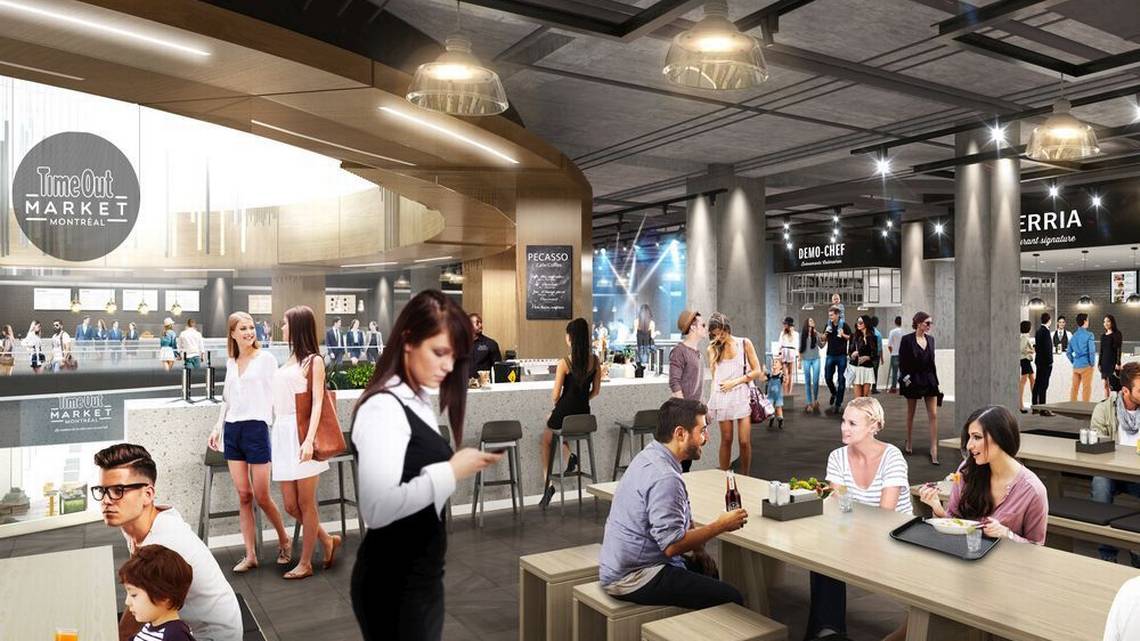
Managing ventilation in a food court is complex due to the number of cooking areas operating simultaneously. A centralized ventilation system from a single manufacturer streamlines this process, ensuring better air balance, improved fire safety, and easier maintenance. Here’s why this approach is beneficial.
The Challenges of Ventilation in a Food Court
Food courts are complex environments where multiple food vendors operate side by side, each with different cooking methods and ventilation needs. They are commonly found in shopping malls, airports, universities, and commercial centers — all high-traffic locations where consistent air quality is essential for customer comfort and vendor operations.
Without a centralized system, air balancing becomes a challenge. Early concessions might exhaust too much air, leaving the last ones under-ventilated. A conventional setup using a single pressure probe in the main duct often lacks the precision and adaptability needed to maintain proper airflow. The more manufacturers involved, the more complex and inefficient the system becomes.
Coordinating Ventilation in a Shared Space
Each food vendor has different cooking requirements — grilling, frying, steaming — which generate varying levels of heat, smoke, and grease. Without a well-coordinated system, early concessions can exhaust too much air, leaving the last ones under-ventilated. This creates uneven airflow, leading to odors and smoke drifting into neighboring concessions and dining areas, affecting customer comfort and safety.
When working with multiple manufacturers, compatibility issues can arise, making it difficult to maintain consistent airflow and pressure. A single-manufacturer system eliminates these complications by providing integrated control over the entire ventilation network, ensuring balanced performance across all concessions.
Understanding Industry Regulations
Commercial kitchens in food courts must comply with strict safety regulations, such as:
- Section 8.2.3.3 of NFPA 96 – Requires automatic start-up of ventilation systems when cooking is detected to prevent smoke and grease buildup.
- Section 10.3 of NFPA 96 – Governs the response to fire events, ensuring automatic shutdown of gas supply and exhaust systems to contain fire spread.
- NFPA 17A – Covers wet chemical fire suppression systems, ensuring compatibility and effectiveness in case of a fire.
By working with a single manufacturer, compliance becomes easier because all components are designed to work together according to these regulations.
Improved Air Balance and Performance
A centralized system measures the amount of air exhausted from each hood in real time using pressure sensors. This data is processed centrally to adjust airflow across the entire system, ensuring that no concession is left under-ventilated.
If a tenant changes or adds new equipment, the system can be easily recalibrated without needing to adjust individual hoods.
Automatic start-up based on cooking activity ensures that ventilation is only active when needed, reducing energy consumption.
Enhanced Fire Safety
Centralized systems improve fire response coordination. If a fire starts in one concession, the system automatically shuts off gas supply across all vendors, preventing the fire from spreading.
Faster response time reduces damage and enhances safety for both customers and staff. Ensuring compatibility of fire suppression agents becomes simpler with a single system, aligning with NFPA 17A requirements.
Advanced Control and Maintenance
Cadexair’s food court ventilation system uses advanced components, including electrical fire protection, addressable controls, and BACnet integration (a building automation communication protocol). Remote monitoring allows operators to adjust and monitor the system in real time, improving efficiency and response times.
New control strategies allow hood modifications without needing to rebalance the entire system, making tenant changes more straightforward.
Simplified Installation and Maintenance
Tenant consultants often face challenges when trying to integrate multiple ventilation systems from different manufacturers. A single-manufacturer system provides clear, consistent guidelines, reducing design errors and installation delays.
- For maintenance, a single point of contact ensures faster troubleshooting and repair.
- System upgrades and modifications are simplified since all components are designed to work together.
- A food court typically operates for 20 years or more — having a uniform system minimizes long-term maintenance issues and reduces operational costs.
How Food Court Tenants Benefit
A centralized ventilation system improves daily operations for tenants:
- Consistent air quality across all concessions
- Reduced downtime from maintenance or adjustments
- Fewer disruptions from equipment failures
- Faster installation and modifications when new tenants move in
The Smart Choice for Food Court Ventilation
Cadexair has successfully installed centralized ventilation systems in high-traffic food courts such as Le Central, Time Out Market Montreal, and Eaton Centre. These projects demonstrate the advantages of a single-manufacturer approach — improved air balance, enhanced fire safety, and simplified maintenance.
Choosing a single manufacturer like Cadexair ensures long-term efficiency, compliance with regulations, and reliable performance for the lifespan of the food court.


